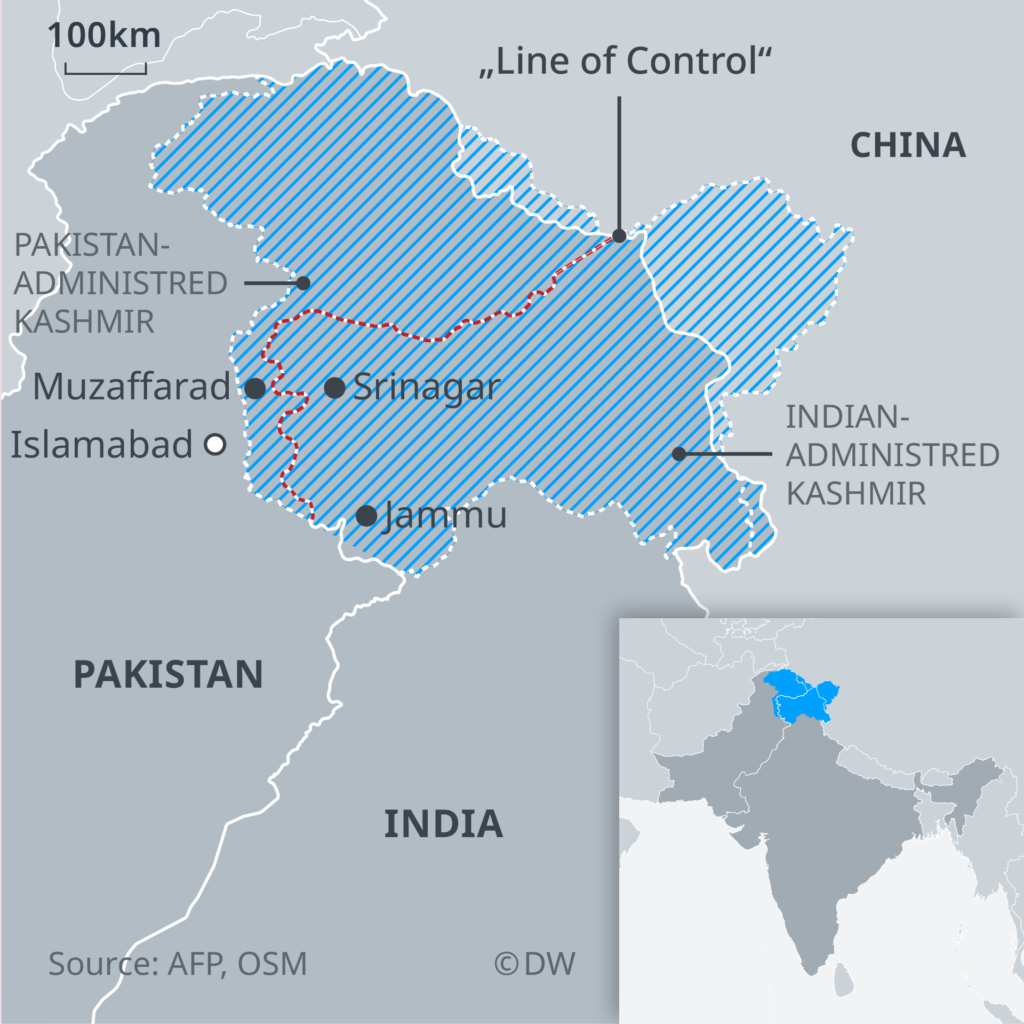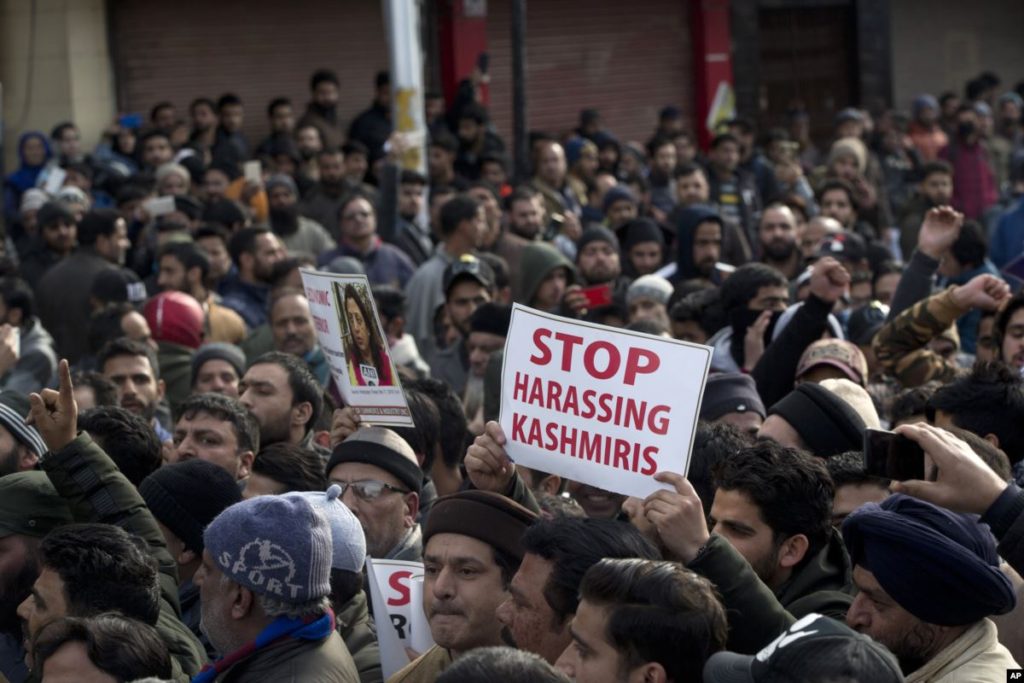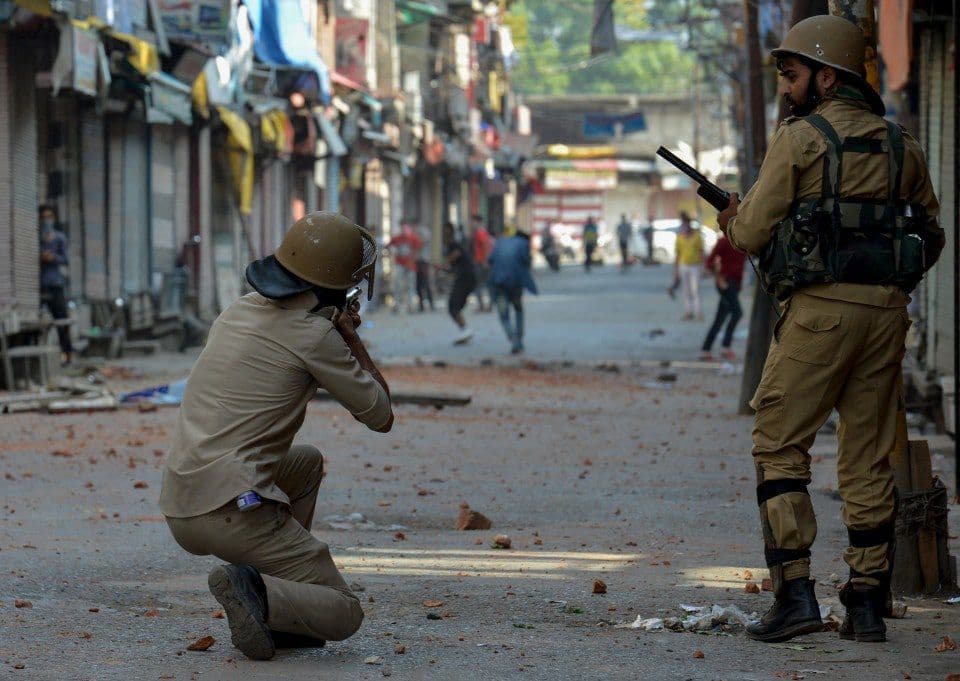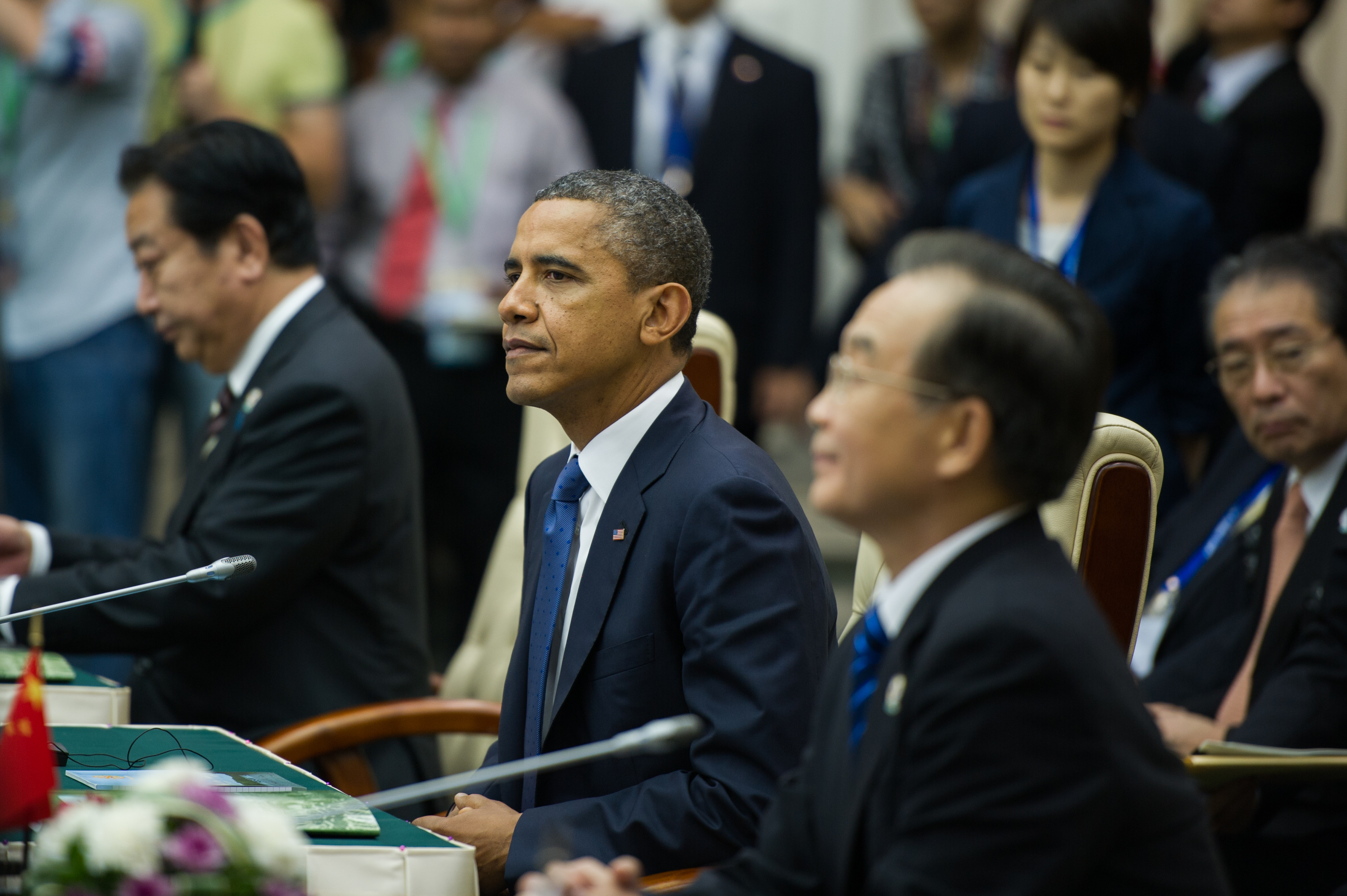When we think about the geopolitical rivalry between India and Pakistan, we often see the region Kashmir as nothing more than a piece of land that nuclear powers squibble over, and forget that Kashmir is home to people with a unique Kashmiri identity who constantly have to live in the shadow of conflict. This must change, argues editor Suhena Mehra.
Twenty years have passed since the last of four wars was fought between India and Pakistan over Kashmir. The year 2019 will be remembered as the year that a fifth war almost broke out between the two nuclear powers.
On February 14, 2019, a suicide bomber targeted a convoy carrying Indian military forces, killing 45 soldiers in Pulwama, Jammu & Kashmir. Jaish-e-Muhammad (Army of Muhammad), a militant group that is considered a terrorist organization by the United States Treasury Department, took responsibility for the attack.
Indian forces responded with airstrikes against the militant group’s training camp, located on Pakistani territory. The airstrikes led to a confrontation between both countries’ fighter jets and an Indian pilot was captured by Pakistani forces on grounds of a territorial breach.
Although the pilot was later returned unharmed to India as a gesture of peace in the wake of a worldwide media uproar, many claim that the media’s unethical reporting of the news on both sides caused an added layer of tension between the two nations. Nobody felt this tension more than the people living in the disputed region of Kashmir, the most militarized zone in the world.

Contested territory Kashmir (Image: Deutsche Welle)
Divided over religion
The continued tension between India and Pakistan over Kashmir stem from a historical divide that came hand in hand with the end of British rule in the South Asian subcontinent in 1947. Religious movements in both countries that the Muslim population would be better off with their own separate nation, sentiments that gained support from political leaders in both nations. The partition affected 14.5 million people on both sides who left their homes in order to start a new life in a nation where they felt more comfortable expressing their religious views. This created the biggest refugee crisis in the region with a death toll between several hundred thousand and two million, a number still disputed to this day.
This religious divide continues to impact both nations even to this day.
Today, Pakistan has an almost entirely Muslim population (around 95%), which makes life as a minority in the region riddled with daily challenges. India has a majority Hindu population of around 80%, and while it declares itself to be a secular nation with a diverse range of religions, it still suffers from nationalist movements that align themselves with the religious majority, making minorities feel like they are living in a less than secular nation.
However, for most of us regular people, the enmity between India and Pakistan extends only to our shared national sport cricket, and even then, we draw the line at friendly banter and attempts to one-up each other on Twitter during the Cricket World Cup. Our love for tea and mediocre family soap dramas unites us and the internet is teeming with heart-touching stories about Indians and Pakistanis bonding over shared values and similar life experiences. Indeed, the geopolitical rivalry between these two nuclear-armed states rarely interferes with our daily lives. However, the same cannot be said for the people of Kashmir.
Kashmiri sentiments
Living in harsh conditions, what sentiments do Kashmiris hold for the sibling nations that continue to fight over it to this day?
Shafat Farooq, a multimedia journalist based in Srinagar, Kashmir, who specializes in documenting regions of conflict and areas under strife told me through email:
“As an individual, I have immense respect for both nations. I’ve been through the pages of history and understood how both these nations achieved their independence, I respect the people of both these countries who sacrificed their lives for the cause of freedom.
“But as a Kashmiri, I feel both these nations aren’t respecting my identity and Kashmir to them, means just a piece of land. One can easily blame both these nations for whatever mess Kashmir is in today.
“These neighbors have to respect the Kashmiri existence and stop behaving like occupying forces.
“It’s the wish of the Kashmiri to see India and Pakistan happy and not at loggerheads with each other.”
According to a report by the Jammu Kashmir Coalition of Civil Society (JKCCS), children in Kashmir are living in the most militarized zone in the world, in the presence of 700,000 troops. The report claims that children are at risk of being exposed to each of the six violations against children as laid out in the United Nations Convention on the Rights of the Child: killing and maiming, recruitment and use of children, sexual violence, abduction, attacks on schools and hospitals, and denial of humanitarian access.
The United Nations has also identified the militarization of schools as the main reason for incidents of harassment, sexual violence and increased drop-out rates from schools and educational institutions. Student protests against military presence have become commonplace and led to more violence in the area.
“To put it in simple words, life is hell in a military zone especially when the place has the world’s highest number of armed men present. Life seems to be flowing from the barrel of the gun. It takes control of your lives, you lose yourself. In a place where there is a heavy presence of military, children are unable to imagine their childhood, their toys get replaced, they hardly play with dolls, toy guns remain in vogue,” says Farooq.

Kashmiris participate in a protest against the targeting of Kashmiri Muslims in Hindu-majority India, in Srinagar, Indian-controlled Kashmir February 22, 2019. (Photo: VOA News)
A mental health survey by Medicines Sans Frontiers revealed that 1.8 million adults (45% of the adult population) in Kashmir experience symptoms of mental distress, 41% exhibit signs of depression, 26% experience anxiety and 19% experience post-traumatic stress disorder (PTSD).
Another survey conducted by the United Nations Drug Control Programme (UNDCP), revealed that 70,000 people in Kashmir are addicted to drugs and 65 to 70% of Kashmiri students are partaking in drug use.
“It always takes a toll on one’s mental health because one feels like the place is surrounded by aliens, by someone who doesn’t understand you, your culture or your language, one who hardly respects your identity or your existence,” says Shaafat Farooq and adds that “it’s hard to plan your life because no one knows what’s going to happen the next moment.”
A student protest rally held in April 2017 at Pulwama College in the Indian-controlled region of Pulwama was met with pellets and tear gas by Indian military forces leading to 50 injured students.
The UN recognizes the numerous human rights violations committed by Indian military forces in the region while also recognizing the Pakistani government’s support of anti-Indian militant groups that have led to violence in the region.
While the two nations adopt various methods to maintain their hold on the region, those affected are average Kashmiri people who simply wish to live their lives in peace, with the same goals and aspirations as any one of us.
A torn but lingering Kashmiri identity
Although the Line of Control or LOC divides Kashmir into Indian and Pakistani territory, the people of these regions cannot identify themselves as a part of either nation. Indeed, “it’s tough to define what it actually means to be a Kashmiri,” says Farooq.
“To be one is definitely a proud thing but understanding Kashmiri in a political context would be like someone who is a pawn in the hands of India or Pakistan or at best a ‘tool’ between these two nuclear giants,”
Pakistan-administrated Azad Kashmir and Gilgit–Baltistan has an almost entirely Muslim population, and so does the Indian administrated region of Kashmir Valley. The remaining two Indian administrated regions of Jammu and Ladakh have majority Hindu and Buddhist populations respectively.
In the South Asian subcontinent, religion plays a big role in shaping national identity, and the religious diversity in Kashmir is one of the biggest obstacles preventing the formation of an entirely Indian or Pakistani identity. This has led to most people simply referring to themselves as ‘Kashmiri’.
Then what does it mean to be a Kashmiri living amidst constant conflict, torn between two national identities? Farooq explains:
“Kashmiri is a distinct identity and although it still lingers on, the last seventy years have been tough for Kashmiris as new identities emerged – an Indian one and a Pakistani one. Over a period of time, both these identities took shape in Kashmir and grew with time.
“The centuries-old Kashmiri identity struggles to find its space between these two powerful identities.
“Although both these identities have political and religious connotations, Kashmiri identity is much different. It smells of secularism, proud cultural and historical background and has a subtle uniqueness to it which was altogether different from both the newly emerged identities.”

Indian police clash with Kashmiri protesters in Srinagar on July 11, 2016 (Photo: Tauseef Mustafa, Getty Images)
Many options, no solutions
Would the Kashmiris be better off with Pakistan? With India? Or on their own as an independent nation?
The answer isn’t as straightforward as most Indians and Pakistanis would think; even the people of Kashmir are unable to come to a consensus.
Amid student protests against Indian occupation, there are those who oppose the Pakistani government’s support of militant groups. There are also insurgent groups that demand independence and autonomy for Kashmir.
The varied opinions are influenced by the hold that diverse religions and cultures have on people living in different regions.
Perhaps it would be best to start by combating the issue of militant groups and militarization of public spaces, and then attempt to come to a mutual agreement between Kashmiri people from different regions.
However, it is not so easy in reality.
Unless both the Indian and Pakistani governments shift their focus from self-serving interests to the interests of the people of Kashmir, the region will remain tumultuous and unstable..
I believe that the first step for us all would be to stop viewing Kashmir as a jeweled crown for either India or Pakistan, but as a home to people who are simply trying to get by, despite their arduous circumstances.







1 Comment
Racism, Systematic Oppression and Police Brutality in the 21st Century - Novasia
5 years ago[…] arrests and torture at the hands of the police since they began their movement in March 2019. The people of Kashmir continue to suffer at the hands of militarized forces, with human rights offenses that have been condemned by international organizations around the […]
Comments are closed.